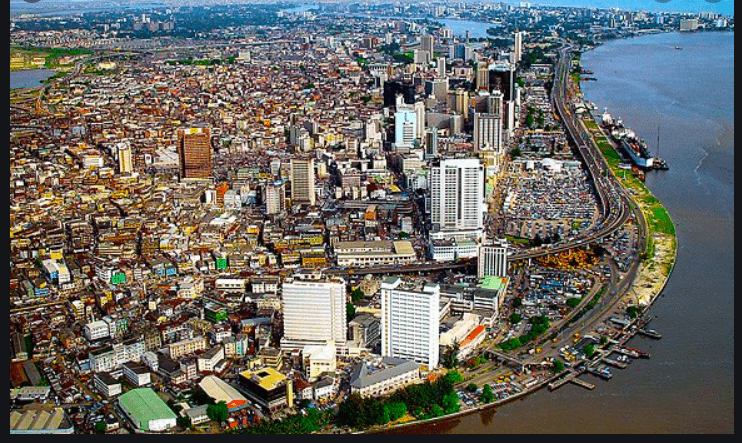
COVID-19: What we Learnt One Week after Gradual Ease of Lockdown
Introduction
Just like other countries of the world, Nigeria embarked on a lockdown to reduce the spread of COVID-19. This was announced by the President on 30th March, at a time when the total number of Coronavirus cases in the country was 131 including two deaths. However, the President announced a phase of gradually easing down after 5 weeks of lockdown as the lockdown measure was already having its toll on the economy, given that the lockdown was done in the top commercial centres of the country.
On 4th May, the first phase of the gradual ease started and residents of Lagos state and Abuja were able to go out to their places of work again. As an independent economic research group, we also set out to observe how the citizens went about their economic activities, how they conveyed themselves, the cost associated with the movement as well as the activities of the transport unions in enforcing social distancing.
The BRT Enforced Social Distancing in their Buses but not On Queues
When you enter one of the BRTs today, you will see signs on each of the rows. One sign marked at “Wrong” and the other sign marked as “Right”. That is, instead of two commuters sitting on two seats, it is now one commuter sitting on the two seats (with one of the seats empty). The carrying capacity is now 22 instead of the normal 44. The windows are also opened and no ACs were on. That is to say, all guidelines for public buses were enforced by the BRTs during the week.
However, while on the queue, social distancing was not enforced as the spaces between two passengers on the queue was not much and this in our view was as a result of the passengers being too much at a time. Hence, there was no space to enforce the social distance, except in cases where the number of passengers at the time were not much.
The Transport Unions have been Relatively Effective in Certain Locations
Thanks to the transportation unions, social distancing was also effective in some locations as the carrying capacity of the buses were 50% that is, two on a row (instead of 4). For example, the buses plying Iyana Ipaja from Lekki Phase 1, carried two passengers on a row. Also, Lekki Shuttles carried 2 passengers on a row. Buses from VI to Egbeda also carried two passengers on a row.
However, in some locations, it was three passengers on a row instead of four. Locations such as Igbo-Elerin first gate to Igando, Igando to Egbeda, and Egbeda to Iyana Ipaja made use of three passengers on a row instead of four. The situation was also the same from Ajah to Victoria Island as passengers have been reduced to three instead of four, and the unions were there to ensure compliance, just as the LASTMA officials also made sure the drivers comply.
From Oshodi to Ikeja Along, down to Dopemu under Bridge and Tollgate, also made do with three passengers on a row instead of four. Same as from Iyana Ipaja to Alakuko. From Badagry to Agbara, the situation was also the same as three passengers on a row instead of four, just as from Agbara to Okoko was three instead of four, as well as Mile-2 to Orile and CMS. Furthermore, the situation was three on a row from Obalende to Oshodi as well as from Victoria Island or Lekki to Obalende. Using Sienna buses, it was two on a row instead of three.
We also note that in all locations reviewed, the drivers, passengers and conductors all adhered to the use of face masks while commuting. The conductors further made use of hand gloves just as their drivers did. Revenue collectors were also on ground with their face masks and hand gloves. Compliance with the use of face masks among the motorists were at about 90%.
Bus Fare Increases by 100%
The reduction in the number of passengers on a row came at a cost as the transportation fares have increased by 100% in most of the locations. For example, Lekki shuttles now charge N100 instead of N50 due to the new number of passengers of two instead of four. Shuttles plying Dopemu Roundabout to Egbeda and Shasha also charged N100 instead of N50. From Iyana Ipaja to Egbeda, the transportation cost have also increased by 100% even though they are carrying three passengers. There is now hardly a location where you will get transportation cost of N50. The minimum is now N100. In Yaba, Agege, and Berger, the situation was also the same as carrying capacity were three on a row instead of four and transportation cost grew by 100%.
For those plying through Oshodi, down to Ikeja Along, Iyana Ipaja, and Toll gate, they now have their fare increased by 50%. In some cases, the cost of transportation increased by 100%. For example on Wednesday, transportation cost went up by 100% as cost of transportation from Oshodi to Iyana Ipaja was capped at N500 while Oshodi to Ikeja Along was going for between N200 and N250.
Prior to now, transportation cost from Lekki to Iyana Ipaja used to be between N500 and N800 depending on the traffic situation and number of buses on ground to serve the teeming workers plying the route. However, with the enforcement of social distancing (two passengers on a row instead of four), transportation cost was relatively the same at N700 from Lekki to Iyana Ipaja.
For the BRTs, even with 50% capacity, the transportation costs have been the same. From Ajah to Victoria Island and Victoria Island back to Ajah, the cost of transportation have also been relatively the same at N300 at a maximum even as the number of passengers have been reduced to three on a row instead of four.
Social Distancing is not Enforced in the Markets
In the markets, we noticed that even though traders adhered to the use of face mask, there was nothing like social distancing as everybody went about doing their business without care of maintaining any form of distance between the traders and customers. There was also nothing like partial ease of lockdown as everybody opened as far as they had one thing or the other to sell.
At Oshodi, the situation was business as usual at the parks as well as in the markets. There was little or no adherence to the rules in place for the social distancing with the exception of spare parts dealers at airport road as well as in Ikeja.
Only Three out of 10 Bank Branches Reviewed Enforced Social Distancing at the Point of Entrance
During the week, we visited 10 bank branches and we noticed that Union Bank branches at Egbeda and Oba Akran, Ikeja as well as Wema Bank in Maryland were the ones that enforced social distancing within and outside their premises. The three branches mentioned put in place, canopies and chairs outside their gates and made sure there is enough space between two chairs. When the customers are about entering, they did it in orderly manners and made sure there is enough spacing between two customers.
For the other banks, they only ensured social distancing inside the banks and do not care about how the customers arrange themselves outside the banks. In some instances, the customers were too much to be controlled by the security personnel on ground. Hence, the banks were able to only enforce the social distancing through limiting the number of customers that enters into the bank at a time.
Conclusion
From the foregoing, it can be seen that the unions have a great role to play in ensuring compliance to the social distancing guideline which they did in some locations. Unfortunately, the citizens are the ones not really adhering to the guidelines due to how they go about with their conducts, even though they all made use of face masks and hand gloves in some cases.
It is also worthy to note that Uber resumed operations and their fares did not increase to take advantage of the situation. And was only a function of the traffic situation. For example, it costs an average of N1,300 to move from Surulere to Lekki using Uber and an average of N1,400 to commute from Ajah to Lekki during the week.
We therefore expect the situation analyzed to still persist in the coming week and after the two weeks gradual ease of lockdown has elapsed, we expect Lagos state to embark on another round of lockdown based on how the residents have conducted themselves during the first and second week of the lockdown.
For questions, opinions, corrections and contributions, please drop them in the comment section. You can as well contact the writer on Twitter @K2ice_JR
Additionally and should you need data backed research and analysis for your business or research needs, you can contact us with your message in the comment section or send a mail to info@giftedanalysts.com





2 Comments
Solutionwheels
Thank you for the update.
This overall shows that the social distancing can’t really work in a place like Lagos.
What is the essence of the social distance inside the bus when people have already had contact together on queue before entering the bus.
Abdulazeez Kuranga
That is it.
The population of the Lagos state already makes it to be at a disadvantage in social distancing. While there will be adherence in some aspects, there will not be adherence in some other aspects. And this makes it not to be effective.